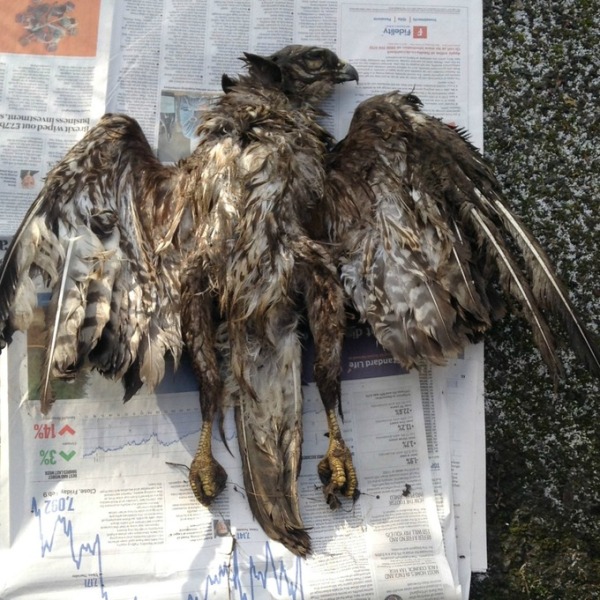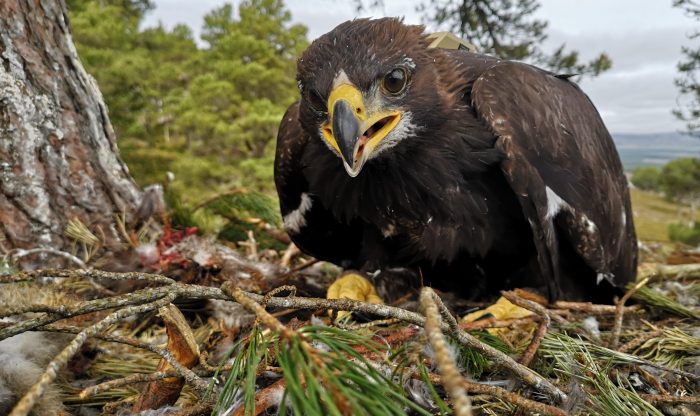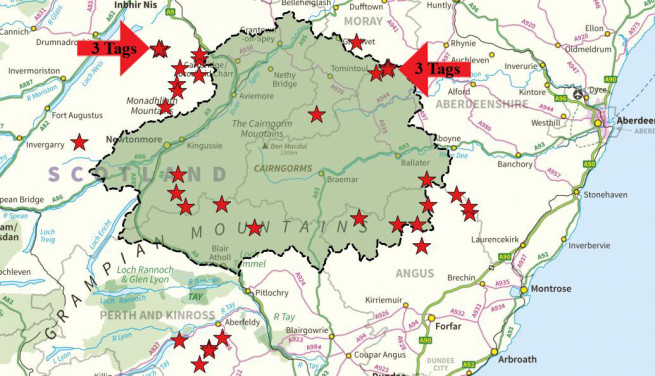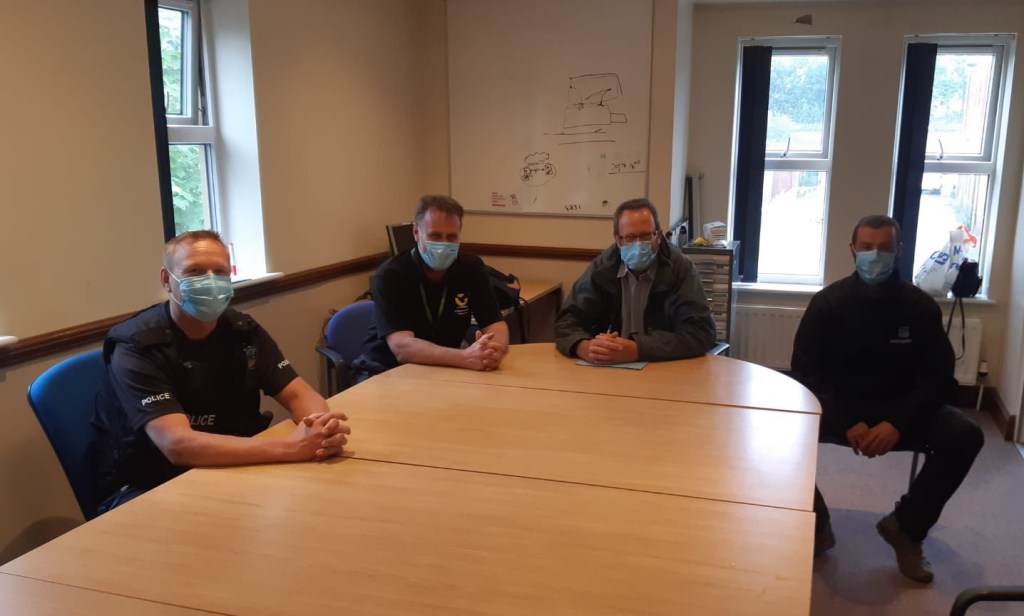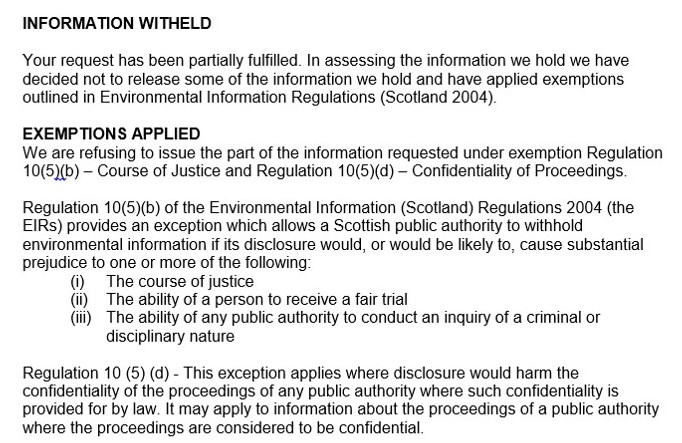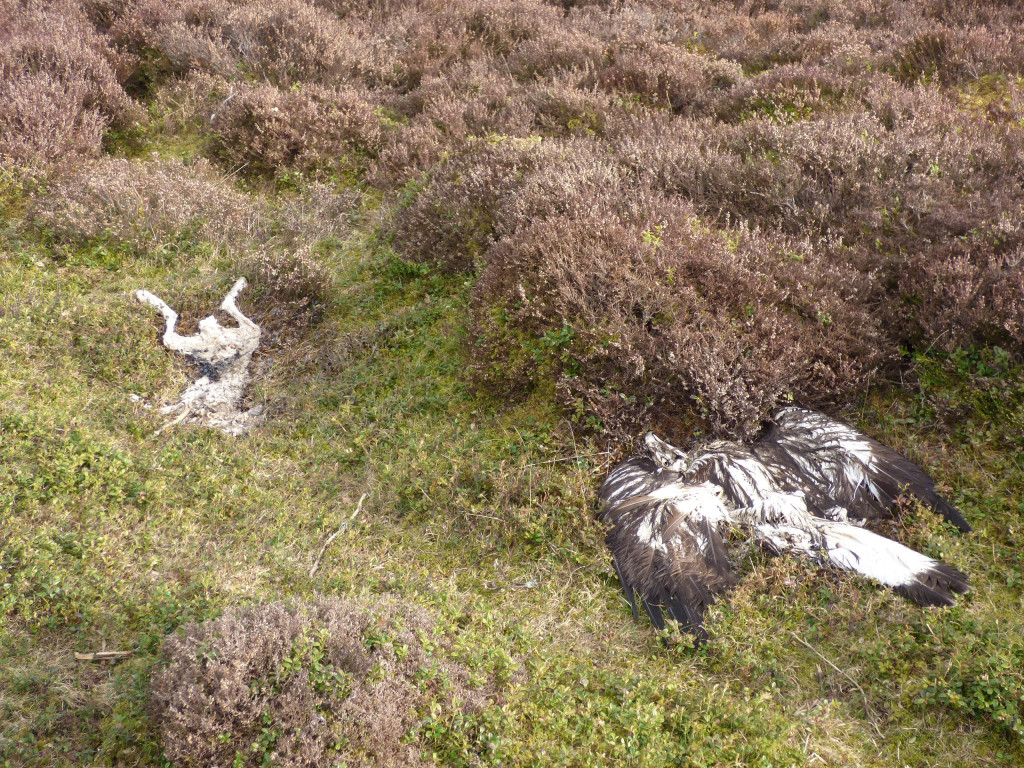Press release from Cairngorms National Park Authority (3rd August 2021). My commentary is below that.
High tech tags to give insight into lives of golden eagles in Cairngorms National Park
Three golden eagle chicks in the Cairngorms National Park have been successfully tagged using the latest innovative technology. Three estates in the Cairngorms National Park – including two in Strathspey – are part of this latest raptor tagging initiative, a partnership project that has been developed and funded by the Cairngorms National Park Authority and NatureScot.
The ‘Celltrack’ tags being used have come from the USA and are among the leading technology in raptor tagging. They will provide a better understanding of the species’ movements, habitat preferences and mortality.
The birds’ movements are tracked in real-time by CNPA staff and partners with transmissions coming in daily, providing a multitude of data that can help better understand the life of juvenile golden eagles, with an inbuilt alert system should mortality occur, whether through natural causes, persecution or other anthropogenic influences. The tags have the ability to detect unusual behaviour and send alerts with accurate locations.
‘Celltrack’ tags make use of an innovative dual communication system with data being sent over the mobile phone network as well as through a network of (ARGOS) satellites. By using this hybrid communication system, the large quantity of location fixes acquired each day can be transmitted over the mobile phone network, with the additional security of satellite communications when birds are out of signal.
Dr Ewan Weston, an independent research ecologist, has been in charge of tagging the golden eagle chicks under licence. He commented: “Having been involved in fitting tags to eagles for 14 years, the technological advances in the tags we use now bring data that was previously unimaginable. The data we receive, feeds into wider research on the species and covers aspects of golden eagle biology and environment, providing an insight into aspects of their lives in incredible detail. This work has included aspects of their dispersal behaviour, interaction with the landscape and developments such as wind farms.”
Dr Pete Mayhew, Director of Nature and Climate Change at the CNPA said: “The more we know about golden eagles in the Cairngorms National Park – from fledging through to acquiring their own territories – the better we can conserve and enhance their populations for the future. This is another excellent conservation partnership project involving government bodies and private estates who all wish to see a healthy future for our raptor species.”
The CNPA set out plans for a golden eagle tagging project in 2019, which included the use of British Trust for Ornithology-provided tags; however, delays in production, technical issues and the impact of the Covid-19 pandemic has seen the project switch to using ‘Celltrack’ tags. However, partners will continue to work closely with BTO over the coming months, including sharing data from the three recently tagged golden eagle chicks.
Seafield & Strathspey Estates are a partner in the project – their Chief Executive Will Anderson said: “We are very proud of our raptor populations here and as a result we are involved in several tagging projects. We are particularly pleased to be partnering with the Park Authority in this initiative as the type and volume of data collected is likely to be incredibly beneficial to be able to plan for the future with the birds needs in mind.”
The RSPB Scotland has also had one of their young golden eagles tagged as part of this project. Fraser Cormack, RSPB Scotland Abernethy Warden said “With raptors still being persecuted in Scotland the data that these tags provide could be crucial in helping to stop such crimes. Also with this potentially being a new territory it will be great to see the chicks movements after fledgling and where it disperses to in the future.”
Andy Turner, NatureScot Wildlife Crime officer, added: “NatureScot are providing strong support to the CNPA on this project. This innovative technological development will strengthen our understanding of golden eagle movements, aiding both research and hopefully acting as a deterrent to illegal persecution. The ability for instant alerts and complex motion data will provide welcome new insights into the movements of these special birds. If this is successful, I hope we can deploy this technology more widely.”
Licenses to tag Golden Eagles are granted on behalf of NatureScot by the British Trust for Ornithology who look at various criteria, especially animal welfare. Tag data will be managed by a small, dedicated team at the CNPA and Dr Ewan Weston, NatureScot, and Police Scotland’s Wildlife Crime Unit.
ENDS
Hmmm. In principle, I am fully supportive of the continued satellite-tagging of golden eagles in Scotland because of the incredible insight they have provided in to the lives of this often elusive species.
Researchers have been able to provide tag data to influence conservation policy, based on new information about these birds that would previously have been almost impossible to find out (e.g. see here for a fantastic piece of modelling, based on satellite tag data, to predict how young dispersing golden eagles in Scotland will use specific landscape features, and here for the most recent scientific paper, again based on satellite tag data showing how young golden eagles in Scotland are actively avoiding wind turbines).
This sort of research is fundamental to our ability to conserve golden eagles and the quality of the research undertaken in Scotland is held in high regard by fellow scientists in Europe and North America.
I’m also very pleased to see the Cairngorms National Park Authority (CNPA) and NatureScot continue to recognise the importance and significance of golden eagle satellite-tagging, and be willing to put their money where their mouths are by funding this tagging sub-project, despite the best attempts of the grouse-shooting industry to derail this type of research. The shooters object because as well as ecological and biological insights, these tags are also providing illuminating information about the locations where golden eagles are still being illegally killed, almost 70 years after they became a protected species.
Significantly, the satellite tag data have allowed researchers to identify several geographical clusters where golden eagle persecution still takes place and more often than not, these are on or very close to moors being managed for driven grouse shooting. Unfortunately for the CNPA, some of those clusters are actually inside the Cairngorms National Park:
[This map shows the last known locations of satellite-tagged golden eagles that have either been found illegally killed or have disappeared in suspicious circumstances between 2004-2016. Data from the SNH report Analyses of the fates of satellite-tracked golden eagles in Scotland (2017) authored by Dr Alan Fielding & Dr Phil Whitfield]
It’s clear then, that the CNPA (and NatureScot) are in an embarrassing position and want/need to be seen to be doing something about the ongoing persecution. And ongoing it is, as we’ve seen with an illegally poisoned white-tailed eagle being found on a grouse moor inside the National Park last year (here) and yet another illegally poisoned golden eagle being discovered on another grouse moor inside the National Park earlier this year (see here). The subsequent bad press from these crimes is difficult for the CNPA to deal with (e.g. here).
And that leads me to be cynical about the timing of this latest press release. If you remember, back in 2019 the CNPA issued a similar press release (see here), stating that a new type of tag had been developed and would be fitted to golden eagles in the National Park over the forthcoming 18 months. The CNPA claimed this new tag would ‘provide an instant fix on any birds which die’.
The reality was somewhat different. The ‘new tag’ wasn’t developed to a sufficient standard that it could be trialled and thus was not fitted. That 2019 press release was considerably premature and I’m going to stick my neck out again and say this latest press release is similarly premature. Although this time a ‘new tag’ has actually been fitted and deployed on three young birds, it is far too soon to know whether the tag actually works as is being claimed, not least whether it will provide an ‘instant alert’ when an eagle dies. The ‘new tag’ being deployed this time is collecting the same type of data as the tags we currently deploy on golden eagles, and it has been used to track raptors in North America, but it is not the tag that we were told was being developed, with public funding, to specifically help detect illegal persecution of golden eagles in Scotland.
So why might the CNPA be keen to put out this press release prematurely? Well, if you’re a cynic like me, you might think that the CNPA has recently received a barrage of criticism for its inability to prevent the illegal killing of golden eagles (and other raptors) inside the National Park, sparked by the discovery of the poisoned golden eagle on Invercauld Estate earlier this spring, and so they’re keen to try and turn that around:
[The deliberately poisoned golden eagle, next to a poisoned mountain hare bait. Photo by RSPB Scotland]
The timing of the press release might also have a lot to do with the CNPA’s forthcoming five-year management plan, where it will have to report on its failures to meet the previous plan’s raptor conservation-based objectives. If the CNPA can chuck in a few ‘positives’ in to the new plan, such as the deployment of these new tags, it might act as a sweetener to those who will, quite rightly, be criticising the Park’s lack of progress on this issue.
Having said all that, I wouldn’t be alone in being delighted if this tag does function as is being claimed, and provides an ‘instant alert’ when an eagle dies, whether that be from natural causes or from illegal persecution. Any technological advance that would help the police to identify the criminals would be warmly welcomed by all (except for the criminals, obviously).
It’ll be interesting to see what happens with this new tag once the young eagles disperse during the autumn and travel into grouse moor areas where eagles are still not tolerated.
Incidentally, there will be short film about golden eagle persecution in Scotland being shown during this weekend’s live broadcast for Hen Harrier Day (Saturday 7th August 2021). If you want to hear more about this and what else is coming up, please sign up for Wild Justice’s event notification here.



